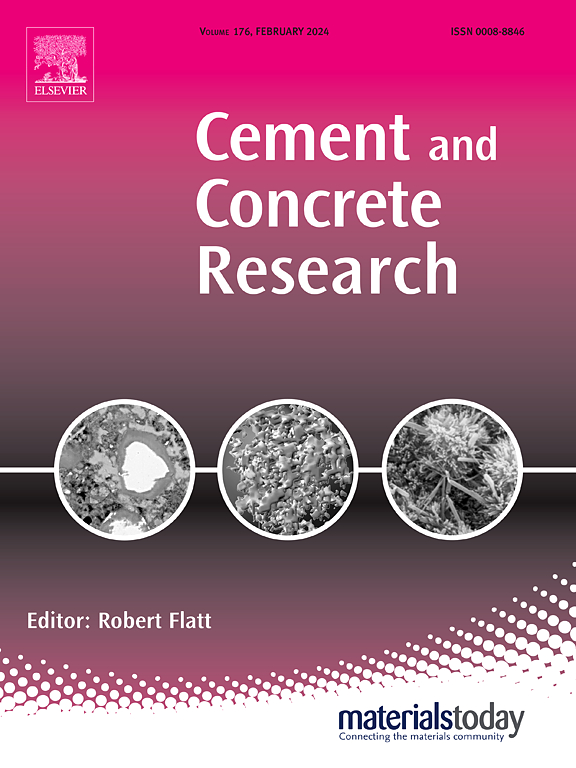Unravelling thermal conduction mechanisms in microwave-cured cement-based composites: Transform from phonon- to electron-based conduction channels driven by nano carbon black
IF 13.1
1区 工程技术
Q1 CONSTRUCTION & BUILDING TECHNOLOGY
引用次数: 0
Abstract
Microwave curing offers energy-efficient concrete treatment, but inherent thermal non-uniformity causes microstructural deterioration and potential explosion due to phonon-dominated thermal conduction. This study introduces nano carbon black (nCB) to construct electron-based conductive pathways for enhancing thermal uniformity, while clarifying the synergistic microwave-hydration mechanisms. The incorporation of nCB improved microwave absorption and constructed thermal channels within concrete, thereby promoting uniform heat distribution and increasing early-age strength by ∼70 %. Moreover, nCB-optimized microwave curing accelerated hydration, promoting C-S-H gel polymerization and modifying crystalline phases like ettringite and portlandite. Multiphysics simulations demonstrated that suitable nCB content enhanced microwave thermal conduction through constructed thermal channels, despite the inherent non-uniformity of electromagnetic fields. The dominant thermal conduction mechanism shifted from phonon- to electron-based conduction by incorporating nCB, driven by synergistic effects of dipole polarization, interfacial polarization, and conduction loss. This work offers a new strategy for optimizing microwave-curing behavior through nanoscale thermal design in cement-based composites.
微波固化水泥基复合材料的热传导机制:由纳米炭黑驱动的声子传导通道向电子传导通道的转变
微波固化是一种节能的混凝土处理方法,但其固有的热不均匀性会导致微观结构恶化,并可能因声子主导的热传导而发生爆炸。本研究引入纳米炭黑(nCB)构建电子基导电通道,提高热均匀性,同时阐明微波水化协同机理。nCB的掺入改善了微波吸收,并在混凝土内部构建了热通道,从而促进了均匀的热分布,并将早期强度提高了约70%。此外,ncb优化的微波固化加速了水化,促进了C-S-H凝胶聚合,并修饰了钙矾石和波特兰石等晶体相。多物理场模拟表明,尽管电磁场固有的不均匀性,但适当的nCB含量增强了通过构建的热通道的微波热传导。在偶极极化、界面极化和传导损失的协同作用下,加入nCB后,主要的热传导机制由声子基传导转变为电子基传导。本研究为通过纳米尺度热设计优化水泥基复合材料的微波固化行为提供了一种新的策略。
本文章由计算机程序翻译,如有差异,请以英文原文为准。
求助全文
约1分钟内获得全文
求助全文
来源期刊

Cement and Concrete Research
工程技术-材料科学:综合
CiteScore
20.90
自引率
12.30%
发文量
318
审稿时长
53 days
期刊介绍:
Cement and Concrete Research is dedicated to publishing top-notch research on the materials science and engineering of cement, cement composites, mortars, concrete, and related materials incorporating cement or other mineral binders. The journal prioritizes reporting significant findings in research on the properties and performance of cementitious materials. It also covers novel experimental techniques, the latest analytical and modeling methods, examination and diagnosis of actual cement and concrete structures, and the exploration of potential improvements in materials.
 求助内容:
求助内容: 应助结果提醒方式:
应助结果提醒方式:


